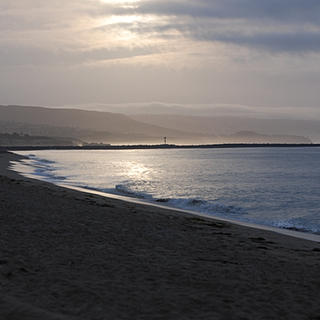Intersectional Environmentalism
- OC Habitats
- Nov 23, 2020
- 4 min read
For decades, environmentalism has aimed to seek the welfare of the environment. We have grown up learning about conservation, recycling, and many other aspects of environmentalism that promote the well-being of our planet. We learn about climate change, how plastic is bad for the environment, pollution, cars and many different ways of how our actions have an impact on our planet. We are taught to care deeply about our environment and our planet’s well-being. Wanting to be an environmentalist means that you want to help the greater good. However, many often recognize that environmentalism not only severely affects the planet’s environments and ecologies but also plays a major role in people’s everyday lives. This doesn’t just mean that the planet is getting warmer or there’s more smog in the air. There tends to be a lack of recognition that some lives are being disproportionately affected by environmental issues.

The term “intersectional environmentalism” was coined by Leah Thomas, inspired by Kimberle Crenshaw who coined the term "intersectionality" in relation to feminism. Leah Thomas started the movement so that environmentalism takes a more inclusive perspective of sustainability, recognizing the interconnectedness of social justice and sustainability. The goal of intersectional environmentalism is to uplift underserved communities, preserve cultures, and protect our planet. To be intersectional means understanding that different factors overlap and contribute to interdependent systems of disadvantage. What this means is that by including intersectionality in our practices of environmentalism, we are aware that environmental issues impact some groups more than others and that we are actively practicing sustainability in ways that will include these communities who may not have the privilege to act sustainably. Some groups are unable to act sustainably because they have no other option than to make choices that may be unsustainable. For example, some families may not be able to afford to purchase clothes from local businesses, are ethically made, or have sustainability in mind. These clothes tend to be a lot more expensive than clothes that are made cheaply in bulk by popular retail companies that often use cheap labor for a fast and inexpensive product.
Environmental issues also impact marginalized communities. An example of this is occurring is the Wilmington Oil Field. In Wilmington, there are 90 active oil wells from the Warren Energy and Power company. These oil wells are so close to residential areas, being as close as 200 feet from residential homes, creating concerns over the health and safety of families. Health effects, such as eye irritation, chronic migraines, and respiratory illnesses arise due to the oil wells’ close proximity. The company uses carcinogens, acidization, and gravel packing as well as pulling from offshore wells and drilling in onshore sites, dramatically impacting the environment. Alongside the environmental effects, the air pollution puts parts of neighborhoods in Wilmington among the top five percent of communities with the highest pollution exposure in California as nearly 60,000 residents suffer from overall poor health, asthma, and cardiac disease.

With many different holidays around the year, it is important to consider the effects of what we are buying and who we are buying from. For example, many holidays focus on consumerism. Examples include Christmas, Valentine’s day, and Black Friday, the day after Thanksgiving where many stores give large discounts to encourage shopping for Christmas. This day has transformed over the years into Black Friday weekends, Cyber Mondays, and whole weeks dedicated to heavily discounted items. Holidays tend to promote heavy consumerism and the exploitation of people and the planet. American consumerism feeds into overconsumption, generating more and more waste with every purchase. Many of the packages ordered contain synthetic fabrics that shed microfibers or micro-plastics that end up in our oceans, unable to biodegrade, and affecting the species that reside in these habitats. Alongside a heavy contribution to pollution, heavy consumerism exploits workers, especially vulnerable workers such as undocumented immigrants and youth in third world countries. For example, the average worker in the LA Fashion District earns around six dollars per hour, which is less than half of Los Angeles’s minimum wage (Mayer, 2020). The workers are often subjected to poor health and safety conditions and long hours with very little pay. Despite there being laws in placed to protect safety standards and a minimum wage, companies are able to get away with these injustices because these laws are not strictly enforced. A large reason why workers are continually exploited is American consumerism. Fast-fashion companies such as Forever21 rely on quick production rates and cheap labor to quickly mass produce cheap/inexpensive items and to keep up with demand.
In order for us to fight the exploitation of people and the planet, we must try to consume less and to be mindful of the effects of what we buy. We also must pay attention to the role in which industries play in this exploitation. Intersectional environmentalism calls for us to support one another, especially vulnerable communities who may not have the privilege to act sustainably. We can practice intersectional environmentalism in our everyday lives by committing to consume less and to support local or BIPOC (Black, indigenous, and people of color) businesses. Some examples of not participating in fast fashion is to buy clothes from thrift stores, such as Buffalo Exchange or Goodwill. A list of thrift stores in Orange County includes Goodwill, Salvation Army, Mariners Church, Sav-More Thrift, Orange Circle Antique Mall, and so many more. There are also contactless options, such as Depop, Etsy, and Rent the Runway. Interested in learning more about sustainable shopping? Watch this presentation by Abby Foster for some tips and tricks!
By purchasing from these stores and buying second-hand, we are not supporting fast fashion and its exploitation. We are also reusing clothes that are already made and ready for rewear, reducing the amount of materials and fabrics put into the environment through the creation of new items. Together, we can help the planet and its people.







Comments